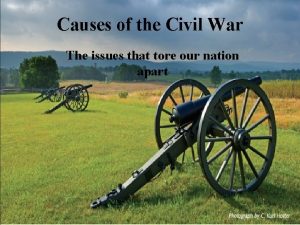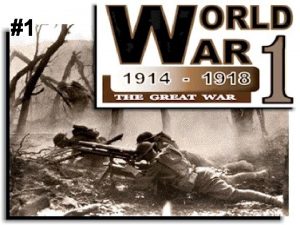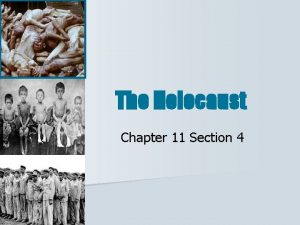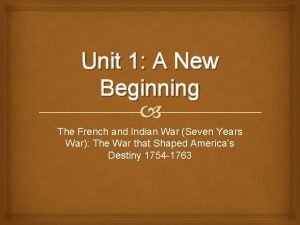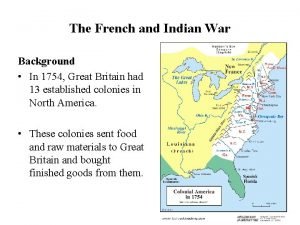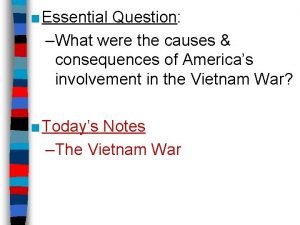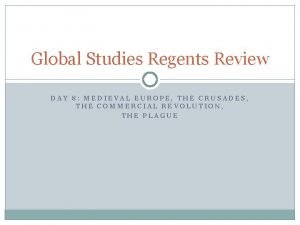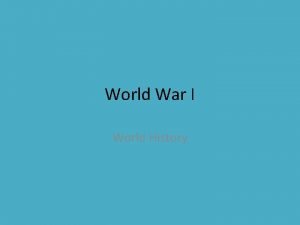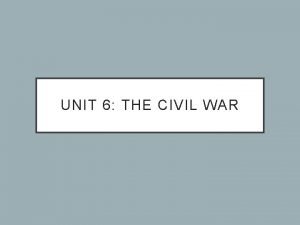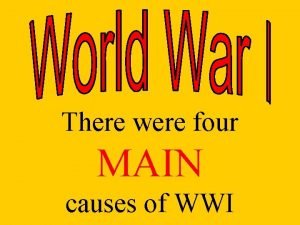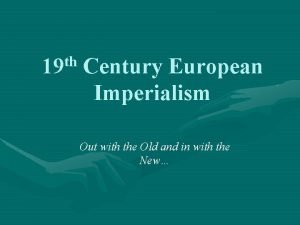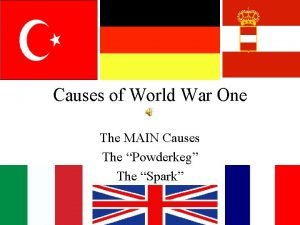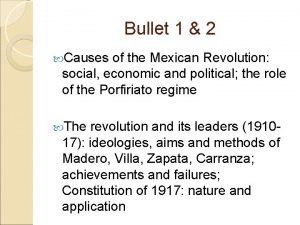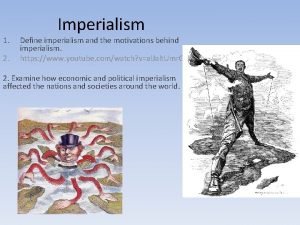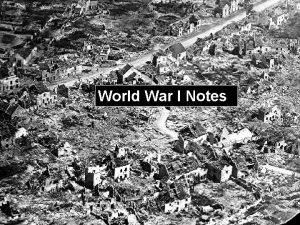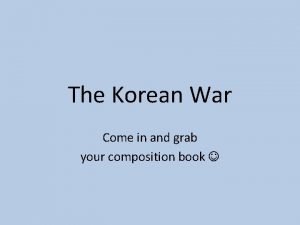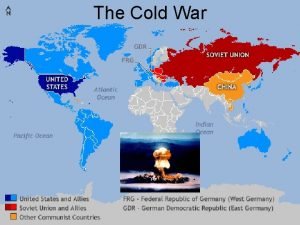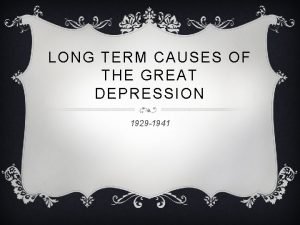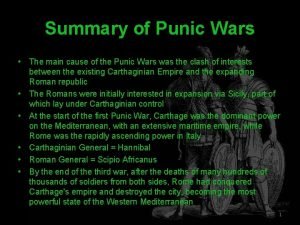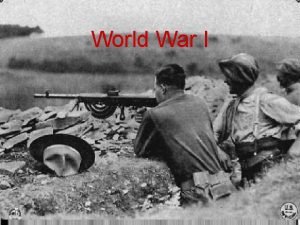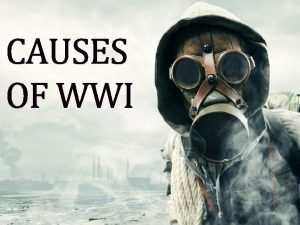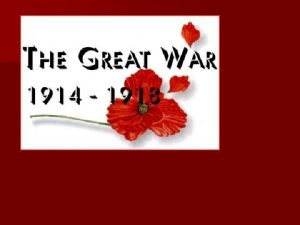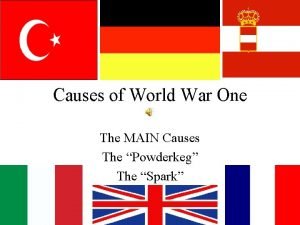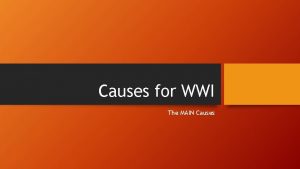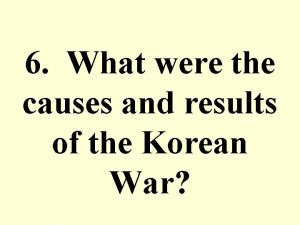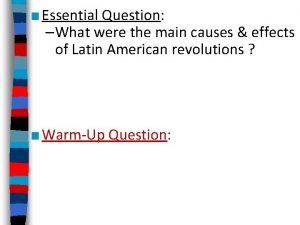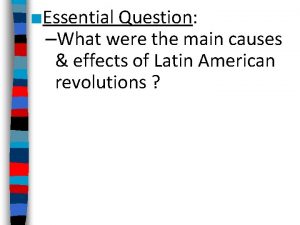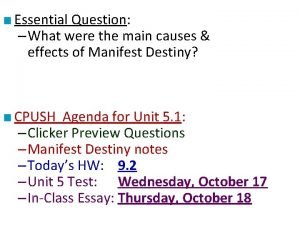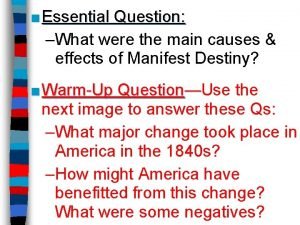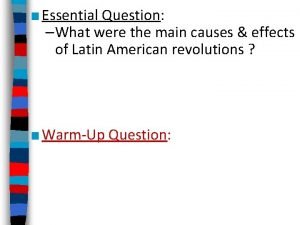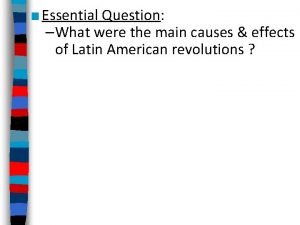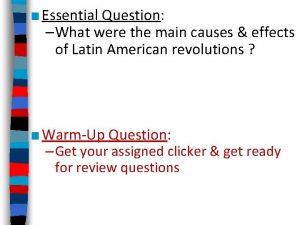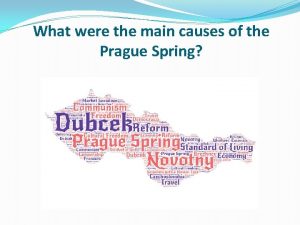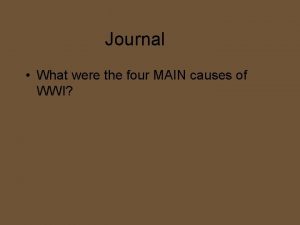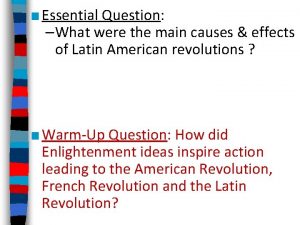What were the main causes and results of























- Slides: 23

What were the main causes and results of the revolutions of 1848?

§ Industrialization § Economic challenges to rulers § Rapid urbanization § Challenges to the artisan class § Population doubled in the 18 th c § Food supply problems § Ideological Challenges § Liberalism, nationalism, democracy, socialism § Romanticism § Repressive Measures § Carlsbad Decrees (Prussia) § Six Acts (England) § Secret police created in many European states

§ Agricultural Crises § Poor cereal harvests § Prices rose 60% in one year § Potato blight Ireland § Financial Crisis § Investment bubbles burst § Unemployment increased rapidly artisan classes

§ Many different reasons for revolutionary activities § Reactions to long and short-term causes § Competing ideologies in different countries § Different revolutionary leaders, aims, and goals in different countries § Some countries had no revolutions § England § Russia


§ Discontent had been mounting against the government of King Louis Phillipe § On February 22, 1848– a large banquet was scheduled to be held in Paris by middle class opponents of Louis Phillipe and his chief minister, Francois Guizot (who opposed electoral reform) § When the government attempted to prevent the banquet, rioting broke out in the streets

§ Workers, joined by some students began tearing up cobblestones and building barricades, armed with guns, demanded a new government § Feb. 23 rd- Louis Philippe responded to liberal demands and dismissed Guizot § Unrest continued and rioting intensified § National Guard joined radicals § Feb. 24 th Louis Philippe abdicates

§ Chamber of Deputies formed a Provisional Government and declared the Second Republic § Set about drafting a democratic, republican constitution for France § Right to vote to every adult male § Bold decrees issued by the provisional republican government expressed sympathy for revolutionary freedoms § Workplace reforms- 10 hr workday for Paris § Freeing all slaves in the French colonies § Abolishing the death penalty § However, internal problems for the revolutionary coalition

§ Government had two groups § Moderate Republicans led by poet Alphonse de Lamartine § Socialists led by Louis Blanc § In an attempt to placate the socialists and workers of Paris, the provisional government placed Blanc in charge of establishing national workshops to provide assistance to the unemployed § Growing tensions between the groups § The nature of work § The right to unionize § Pay levels § The costs of government social programs § Can you have liberty for all men and still have a system based on private property?

§ French people went to the polls in April, in most cases for the first time § Resulted in a conservative majority in the Constituent Assembly § 500 Monarchists and conservatives § 270 moderate republicans § 80 radicals/socialists § The conservative majority wanted the removal of radicals like Blanc from the government § In early June, the National Workshops were shut down § The clash of ideologies became a clash of classes and arms after the election

§ In May, workers invaded the Constituent Assembly and tried to proclaim a new revolutionary state § Government responded by using the National Guard to squash uprising § Government started to arrest radicals § Once the workshops were officially closed in June– all unmarried males would be drafted into the military

§ Violent uprising followed § Worker groups in Paris rose up in insurrection § Said the government had betrayed the revolution § Many wanted a redistribution of wealth § Barricades in the streets § Class war began § This time the government had the support of army and peasant France § The Republican army under General Louis Cavaignac was triumphant

§ In place of a generous democratic republic, the Constituent Assembly completed a constitution with a strong executive § An elected president § One-house legislature § Allowed Louis Napoleon to win a landslide victory in the election of December 1848 § His name and desire for peace allowed him to win election § Would become a semi-authoritarian regime § *France was different from other countries because nationalism was not a key issue*



§ The revolution in the Austrian Empire began in Hungary in March 1848 § Kossuth led the Hungarians in demanding § National autonomy § Full civil liberties § Universal suffrage § Monarchy in Vienna hesitated, students and workers took to the streets and raised barricades in defiance of the government § Habsburg emperor Ferdinand I promised reform and a liberal constitution § Metternich fled to London § The old order seemed to be collapsing

§ Conflicting national aspirations further weakened and ultimately destroyed the revolutionary coalition § Hungarian revolutionary leaders pushed through an extremely liberal, almost democratic, constitution § Wanted to create the kingdom of Hungary – unified, centralized Hungarian nation § The minority groups (Croats, Serbs, and Romanians) rejected this unification § Each group felt like they had the right to political autonomy and cultural independence

§ Czech nationalists based in Prague and other parts of Bohemia came into conflict with German nationalists § The desires for national autonomy within the Austrian Empire allowed the monarch to play one ethnic group against the other § Conservative aristocratic forces rallied—archduchess Sophia (Emperor’s sister-in-law) § Powerful nobles joined Sophia to crush revolutions § Francis Joseph crowned emperor in Dec. 1848 § Nicholas I of Russia helped subdue Hungary § Habsburgs ruled Hungary like a conquered territory


§ Rioting in Berlin led to the Prussian King, Frederick William IV to cave to demands § He promised to grant Prussia a liberal constitution and to merge Prussia into a new national German state § An elected Prussian Constituent Assembly met in Berlin to write a constitution for the Prussian state § At the same time, elections held across Germany for a national parliament – write a federal constitution that would lead to national unification § Met in Frankfurt § Debated “What was Germany? ”

§ At first, proposed unification around a Greater Germany (include German speaking lands of the Austrian Empire in a national state) § Some of the more conservatives favored this option § Others opposed the inclusion of Austria arguing that the Habsburgs would opposed a liberal constitution and it would also include a lot of non. Germans § Austria refuses § In 1849, the Assembly gave King Frederick William of Prussia emperor of the “lesser” German national state (without Austria) § Frederick William reasserted his royal authority and disbanded the Prussian Constituent Assembly § Refused the “crown from the gutter” offered by parliament in Frankfurt § With support of Russia, Austria forced Prussia to renounce all schemes of unification § German Confederation re-established in 1851

§Revolutions FAILED!

§ What were the new ideologies that emerged to challenge conservatism? § What were the main causes and results of the revolutions of 1848? § Why did the ideas of the romantic movement so easily support reformist and radical political ideas, including liberalism, republicanism, and nationalism? What do you think this reveals about the general connections between art and politics? § How did the spread of radical ideas and movements for reform and revolution draw on “unfinished” political and industrial revolutions of the late 1700 s?
 What were the 4 main causes of the civil war
What were the 4 main causes of the civil war Causes of nationalism
Causes of nationalism How did the holocaust develop and what were its results?
How did the holocaust develop and what were its results? Persian wars cause
Persian wars cause What were the causes of the french and indian war
What were the causes of the french and indian war What was the causes of the french and indian war
What was the causes of the french and indian war What were the causes and effects of the vietnam war
What were the causes and effects of the vietnam war Ultimate vs proximate causation
Ultimate vs proximate causation Proximate and ultimate causes of behaviour
Proximate and ultimate causes of behaviour What were two indirect results of the crusades
What were two indirect results of the crusades Was/were going to
Was/were going to Causes of imperialism
Causes of imperialism Civil war causes
Civil war causes What were the main reasons for ww1
What were the main reasons for ww1 What were the causes of imperialism
What were the causes of imperialism Cause of ww1
Cause of ww1 What were the causes of the mexican revolution
What were the causes of the mexican revolution Define queen
Define queen World war 1 mania
World war 1 mania Causes of the korean war
Causes of the korean war What were the causes of the korean war
What were the causes of the korean war What were the long term causes of the great depression
What were the long term causes of the great depression What was the main cause of the punic wars
What was the main cause of the punic wars Cause of ww1
Cause of ww1
